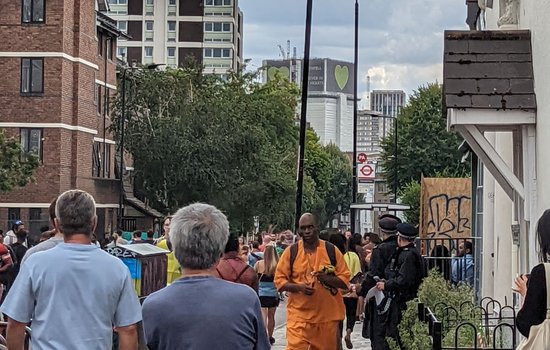What comes to mind when you hear the word poverty? It’s a term often shaped by stereotypes and stigma. But two million Londoners - and millions more across the UK - live in poverty.
It affects all ages and regions, though some groups are hit harder than others. Use this section of Understanding Poverty in London to explore who is most at risk.
-
35%
of children in London are in poverty -
49%
of working-age Londoners in poverty are employed -
1 in 2
single parents in London are in poverty
Poverty is common among working Londoners
Many people think that poverty happens when someone isn't in work. But half of adult Londoners in poverty are employed. This often surprises people: work is meant to be the route to a better life.
- Across the country, a high proportion of people in poverty are employed. Many people's jobs aren't enough to meet the cost of living.
- This is especially true in London, where living costs are significantly higher. 49% of adult Londoners in poverty are in work.
- People working in the health and social work sector are especially likely to be in poverty.
Children are especially likely to be in poverty
As prices have gone up and the housing crisis has worsened, it has become more difficult to raise a family in London.
As a result, families with children are the most likely to be in poverty.
- Children are more likely to be in poverty than adults. Overall, 35% of children in London are in poverty - compared to 23% of working-age adults, and 22% of pensioners.
- This reflects the cost of raising children in the capital. London's child poverty rate is higher than the rest of England's.
- Some age groups are especially likely to be in poverty in London. For example 39% of 10-14 year olds in London are in poverty, compared to 28% in the rest of England.
- More than half (53%) of single parents in London are in poverty, higher than in the rest of England.
Some people are more likely to be in poverty than others
Our society is unequal in lots of ways and structural and systemic issues can keep people trapped in poverty. For example, Black and minoritised people are often locked out of opportunities. So are Disabled people.
- Black Londoners are twice as likely to be in poverty, compared to white Londoners. 36% of Black Londoners are in poverty, compared to 18% of White Londoners. We explore some of the reasons for this in the next section.
- Bangladeshi Londoners are even more likely to be in poverty. 62% of this group were in poverty in 2023/24 - a massive 15 percentage points higher than any other group shown in our dataset.
- Disabled people are more likely to be in poverty. Households in London with a Disabled family member are more likely to be in poverty (31% compared to 24%). The way our society currently works means Disabled people are less likely to be in paid work and are more likely to rely on social security, which rarely covers the cost of living.
- Poverty is higher among women than men. 28% of women in London are in poverty, compared to 24% of men. This gap has increased over the last four years.
Head to the next section to learn about the reasons for these high poverty rates. Or explore our data-sets for poverty by demographics.
